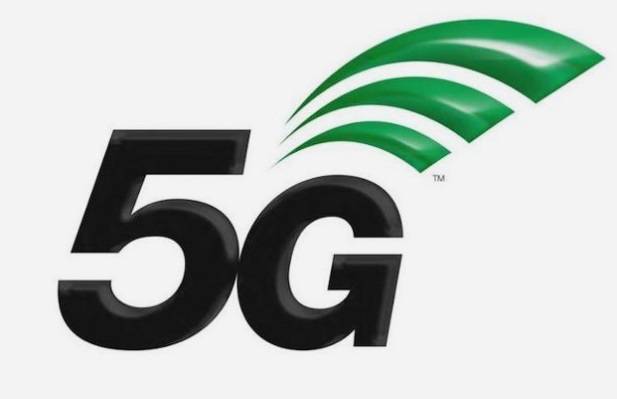
Here’s what the arrival of 5G means for you and me
Some carriers have jumped the gun, claiming they already offer 5G. This is a blatant lie. It’s actually only a faster and better version of current 4G LTE technologies. The advertising lies got so bad that the U.N. had to step in.
For every “G”, the mobile world (manufacturers, carriers, tower operators, etc.) have to agree on a set of specifications. The agency that defines these standards is the International Telecommunications Union (ITU), a United Nations body. And it finally came out with a set of specifications recently, that prove the “5G” claims of carriers are bogus.
AT&T’s “5G Evolution” does not meet these specifications, and neither will Verizon’s upcoming claim of delivering 5G. They are using 4G technologies like 4×4 MIMO (what is MIMO?) to boost data speeds, but they don’t match 5G. And while data speeds are important, 5G isn’t just about data speeds. There’s so much more to it.
What is 5G?
Right now, 5G isn’t defined. No one knows the final specifications yet. But the ITU has so far agreed on a few key requirements for 5G performance.
No Call Drops — This is the biggest change for the regular mobile user. You will not drop calls or lose internet connectivity when you’re switching between towers on a 5G network. The ITU says a 5G network is one where such mobile interruption time does not exist, so unless that specification is met, it’s not 5G.
Low Latency — 5G phones will have latency between 4ms and 1ms (the lower the better). Latency, measured in milliseconds, is the amount of time that your phone takes to send a signal to an internet server. The fastest for 4G is a latency of 50ms. Low latency will drastically improve experiences like augmented reality, or virtual reality with smart glasses.
Battery Efficient — You’ve heard about how data connectivity is draining your phone’s battery. The 5G networks will significantly reduce that with better “sleep” features. “Sleep” is when the phone isn’t using the network.
Works at 500 Km/h — The faster your vehicle is driving, the faster your phone is moving. This means your phone is changing mobile towers at a rapid rate. Current mobile networks can’t handle these rapid handovers between towers. 5G will work even when you are in a high-speed train travelling at 500 Km/h.
How fast is 5G?
5G networks will have a real-world download rate of 100 Mb/s (Megabits per second) and upload rate of 50 Mb/s. That’s about 12 MB of data download per second. An hour-long Netflix show in HD will download in roughly four minutes.
The ITU distinguishes between “peak data rates” (technically highest possible in lab settings) and “experienced data rates” (what users will get in real-world conditions).
5G will have peak data rates of 20 Gb/s (gigabits per second) downlink and 10 Gb/s uplink. In lab tests so far, Nokia and Samsung have managed downlink speeds of 10 Gb/s and 7.5 Gb/s, respectively.
The bottom line: it’s really, really fast!
When will 5G phones and networks be available?
The estimate for regular consumers to get 5G phones is 2020. The U.S. will see the first lot of 5G-compliant devices in 2019, according to Intel and Ericsson executives. But the ITU’s timeline puts 2018-2020 as a period of “defining the technology,” so there might be some changes left.
That 2020 estimate is partly based on the mobile world’s 10-year cycle of launching the next generation network. It started with analog 1G in 1982, moved to digital 2G in 1991, boosted to 3G in the 2000s, and landed on the current 4G networks since the 2010s.
5G networks are expected to run in the 28 GHz, 37 GHz, and 39 GHz bands in the U.S., according to the FCC. Generally speaking, 5G will start at 30 GHz so that it can take advantage of millimeter waves. For comparison, 4G works between 700 MHz and 2100 MHz. A gigahertz is literally a thousand times stronger than a megahertz.
5G is the first network to work on millimeter waves, which will allow for much higher data transfers than currently possible. Millimeter waves will also reduce the size of antennae needed. This means wearable technology like smart watches or smart glasses will be able to fit 5G connectivity more easily.
What are the advantages of 5G?
For the end consumer, 5G will have tangible benefits like:
Faster download and upload speeds.
Better video calling, especially while moving.
Better battery life on phones.
Fantastic augmented reality, since 5G tracks users in real time and loads data faster.
Virtual reality mobile experiences, due to speeds that can support real-time 4K streaming on mobiles.
Improvements in wearable technology, like fitness bands that can track your every move.
More IoT (Internet of Things) and smart devices, since 5G antennae are smaller and more battery-efficient than current technology.
Better driverless cars, since latency is dramatically reduced.
There is a lot more to 5G, of course, including indirect benefits. For example, it brings long-term cost benefits to the mobile industry, which in turn, will pass on those benefits to the consumer.
By Mihir Patkar